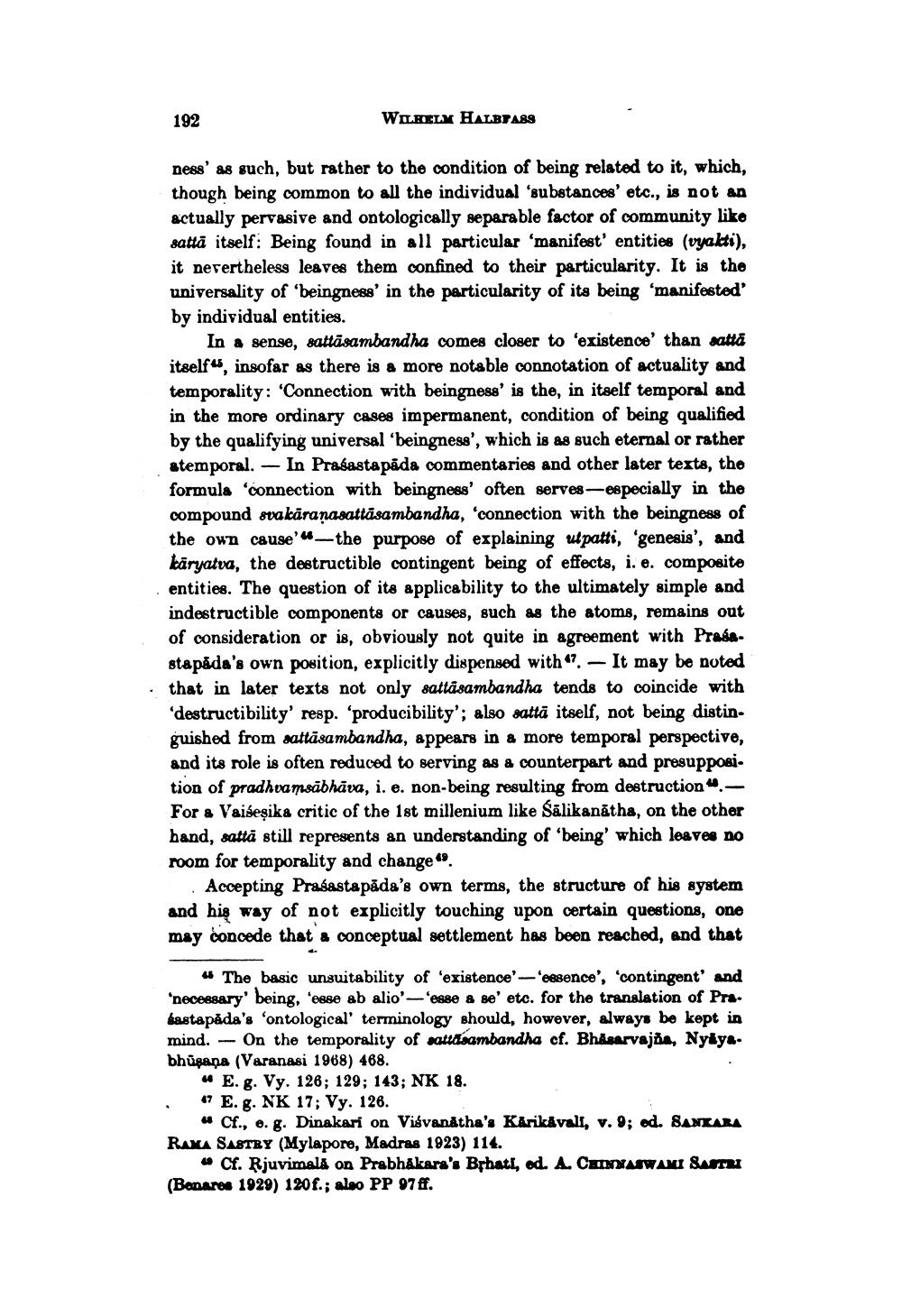________________
192
WILHELX HALBLASS
ness' as such, but rather to the condition of being related to it, which, though being common to all the individual 'substances' etc., is not an actually pervasive and ontologically separable factor of community liko sattā itself: Being found in all particular 'manifest' entities (vyakti), it nevertheless leaves them confined to their particularity. It is the universality of beingness' in the particularity of its being 'manifested' by individual entities.
In a sense, sattasambandha comes closer to 'existence' than satta itself“, insofar as there is a more notable connotation of actuality and temporality: 'Connection with beingness' is the, in itself temporal and in the more ordinary cases impermanent, condition of being qualified by the qualifying universal 'beingness', which is as such eternal or rather atemporal. - In Prasastapāda commentaries and other later texts, the formula 'connection with beingness' often serves —especially in the compound svakaranasattasambandha, 'connection with the beingness of the own cause'--the purpose of explaining utpatti, 'genesis', and karyatva, the destructible contingent being of effects, i.e. composite entities. The question of its applicability to the ultimately simple and indestructible components or causes, such as the atoms, remains out of consideration or is, obviously not quite in agreement with Prasastapada's own position, explicitly dispensed with. - It may be noted that in later texts not only sattasambandha tends to coincide with 'destructibility' resp. 'producibility'; also sattā itself, not being distin. guished from sattasambandha, appears in a more temporal perspective, and its role is often reduced to serving as a counterpart and presupposi. tion of pradhvamsābhāva, i. e. non-being resulting from destruction.For a Vaibesika critic of the 1st millenium like sālikanātha, on the other hand, satta still represents an understanding of 'being' which leaves no room for temporality and change".
Accepting Prasastapäda's own terms, the structure of his system and hiß way of not explicitly touching upon certain questions, one may concede that a conceptual settlement has been reached, and that
4 The basic unsuitability of 'existence' -- 'essence', 'contingent' and 'necessary' being, 'esse ab alio'--'esse & se' etc. for the translation of Pra. kastapäda's 'ontological' terminology should, however, always be kept in mind. - On the temporality of ratudsambandha cf. Bhåsarvajña, Nyiya. bhūsana (Varanasi 1968) 468.
E. g. Vy. 126; 129; 143; NK 18. . 67 E. g. NK 17; Vy. 126.
Cf., e. g. Dinakari on Visvanatha's Kårikåvall, v. 9; od. SANKARA RAXA SASTRY (Mylapore, Madras 1923) 114.
Cf. Rjuvimala on Prabhakara's Bphatl, od. A. CHWASWAN Serra (Banares 1929) 120f.; also PP 97 ff.




